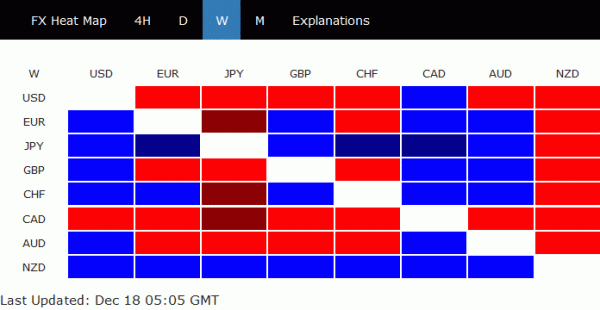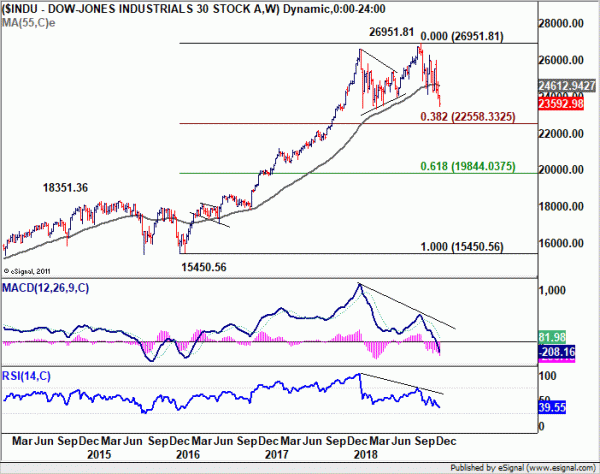US equities dived for another day overnight and risk aversion spreads to Asia today. DOW dropped -507 pts or -2.11% to 23592.98. S&P 500 declined -54.01 pts or -2.08% to 2545.94. NASDAQ lost -156.93 pts or -2.27% to 6753.73. At the time of writing, Nikkei is down -1.64%, Singapore Strait Times is down -1.81%, Hong Kong HSI is down -0.90% and China Shanghai SSE is down -1.09%.
In bond markets, US 10 year yield dropped -0.034 to 2.857. Yield curve is inverted between 2-year (2.696) and 3-year (2.683). 5-year yield is not far away at 2.692. Japan 10 year JGB yield is down -0.006 at 0.030, after hitting as low as 0.026 earlier today.
In the currency markets, New Zealand Dollar continues to walk its own path and is the strongest one for the week. Yen follows on risk aversion, then Swiss Franc. Canadian Dollar is the weakest as WTI crude oil is back below 50 as recent decline resumes. Dollar second weakest.
White House trade advisor Peter Navarro said Fed shouldn’t raise interest rate, even this week. He said it’s “not because the economy’s slowing down, but because the economy’s growing without inflation”. Trump also blast Fed for “even considering yet another interest rate hike”. Whether Fed should or shouldn’t continue with rate hike is one question, they’ve got enough seasoned economists there to make their own judgement. But noting that Dollar and yield declined, there is apparently no linkage between Fed’s hike to the stock market crash.
Additionally, the relatively small reaction in Hong Kong and China stock markets suggested that US-China trade truce has been sentiment supportive. Instead, the global rush from stocks to bonds, including US, Japan and Germany, suggested that there is deep lying concern over slowdown, which in large part, was due to Trump’s tariffs and tariffs threats.
Anyway, DOW is medium term correction that started back at 26951.81. We’d reiterate such correction should head to 38.2% retracement of 15450.56 to 26951.81 at 22558.33 before completion. We’d see the reaction from there before judging how deep the correction would develop into.














